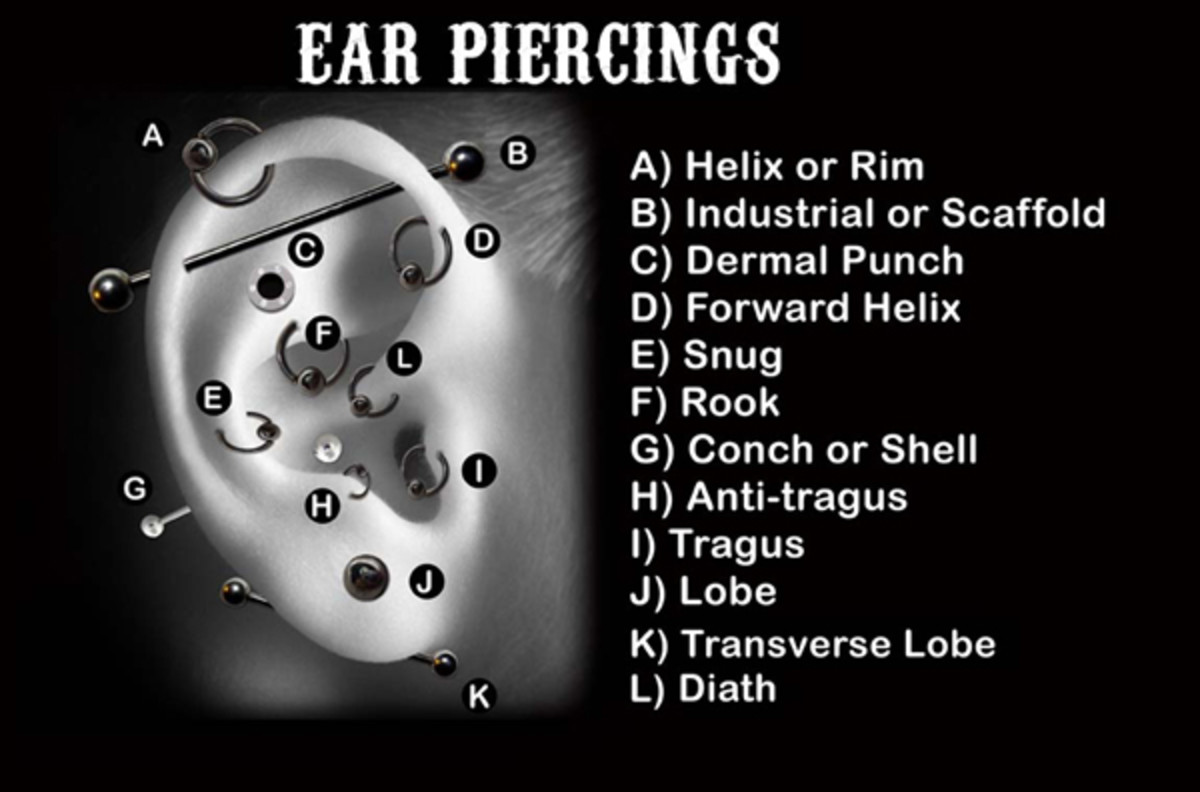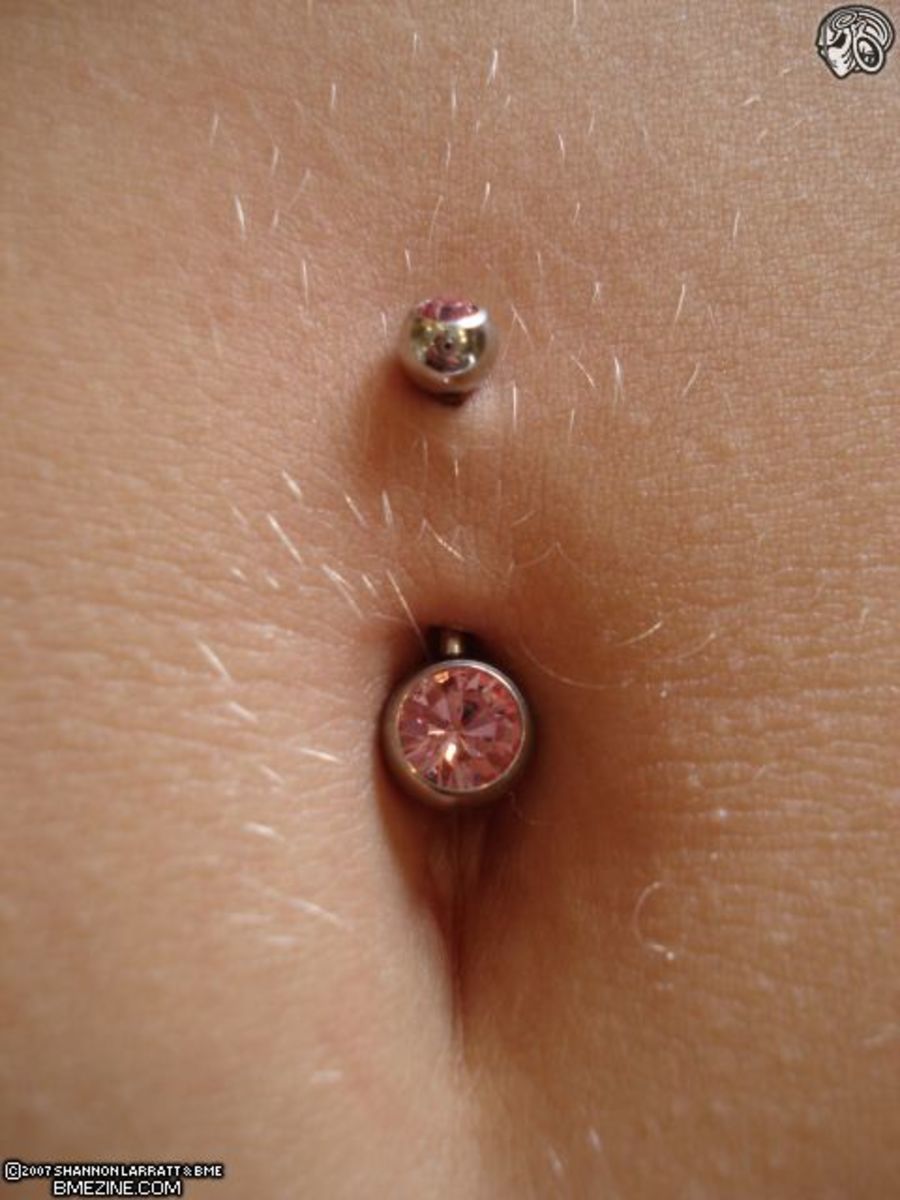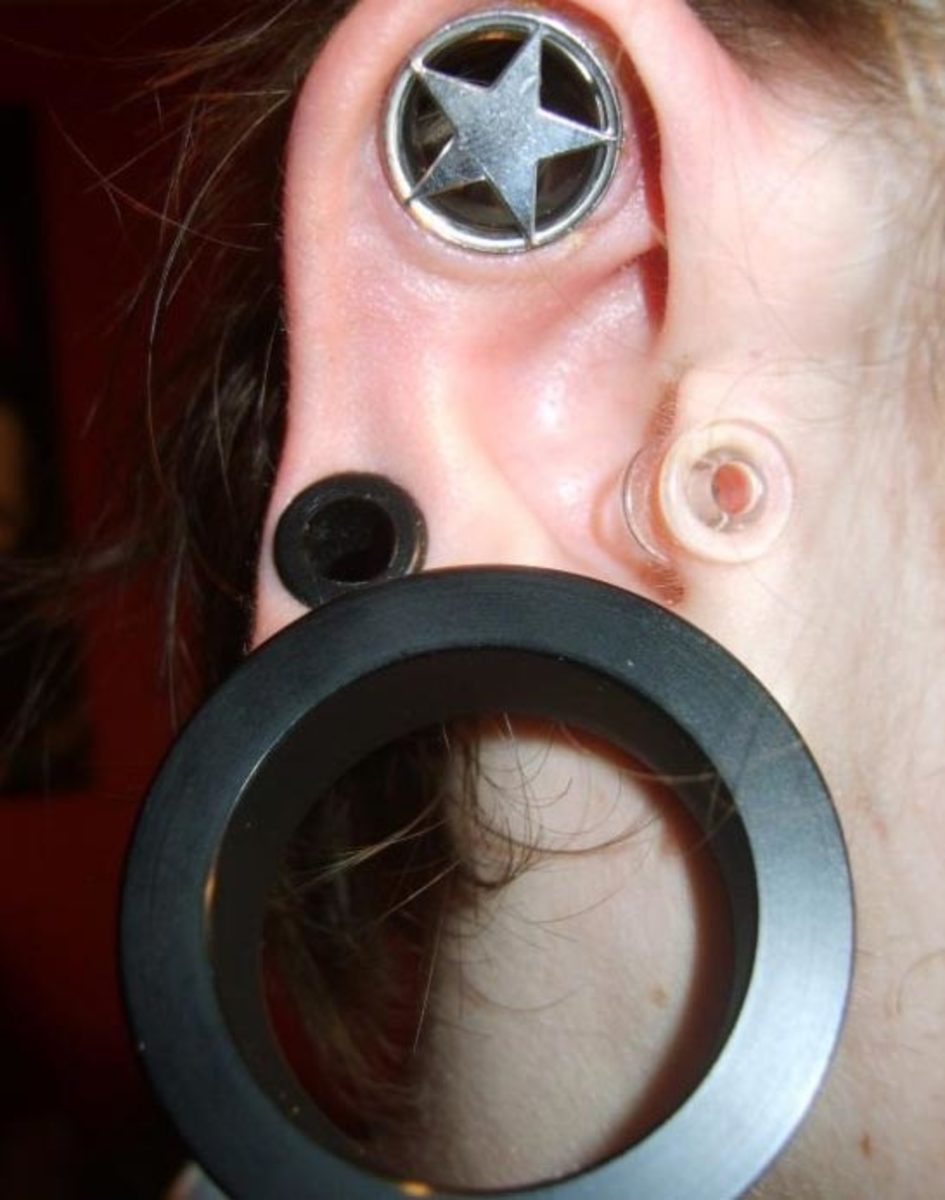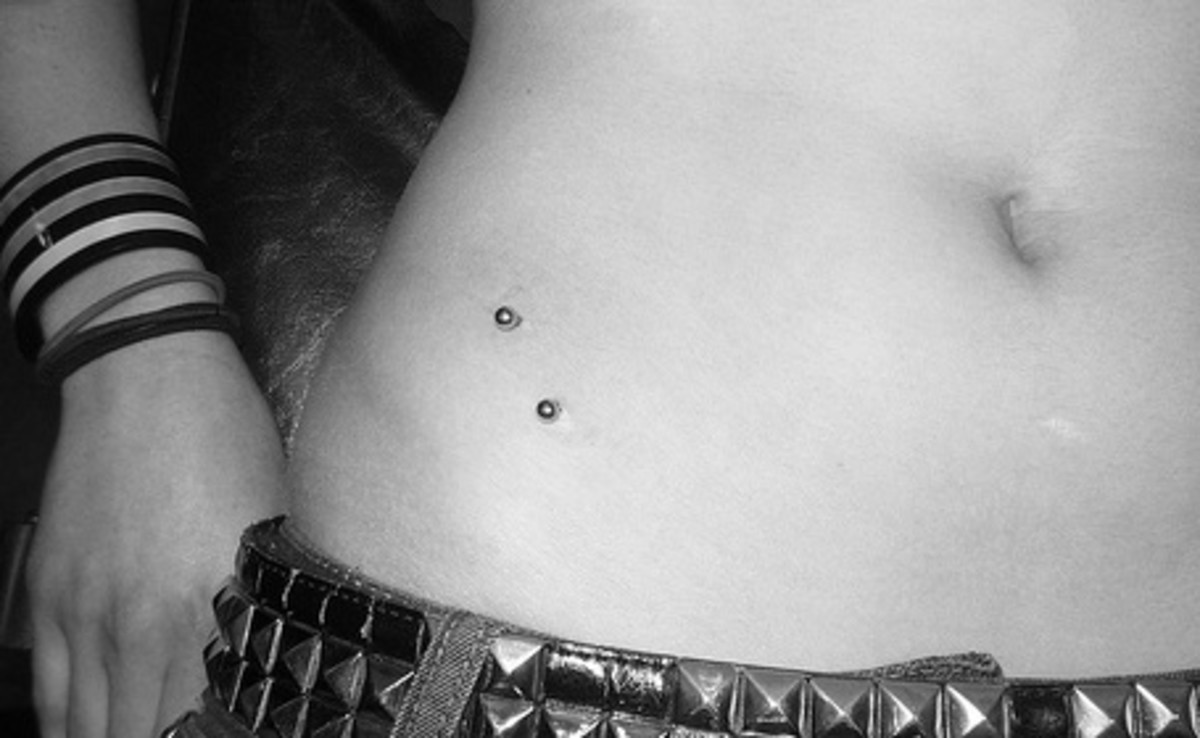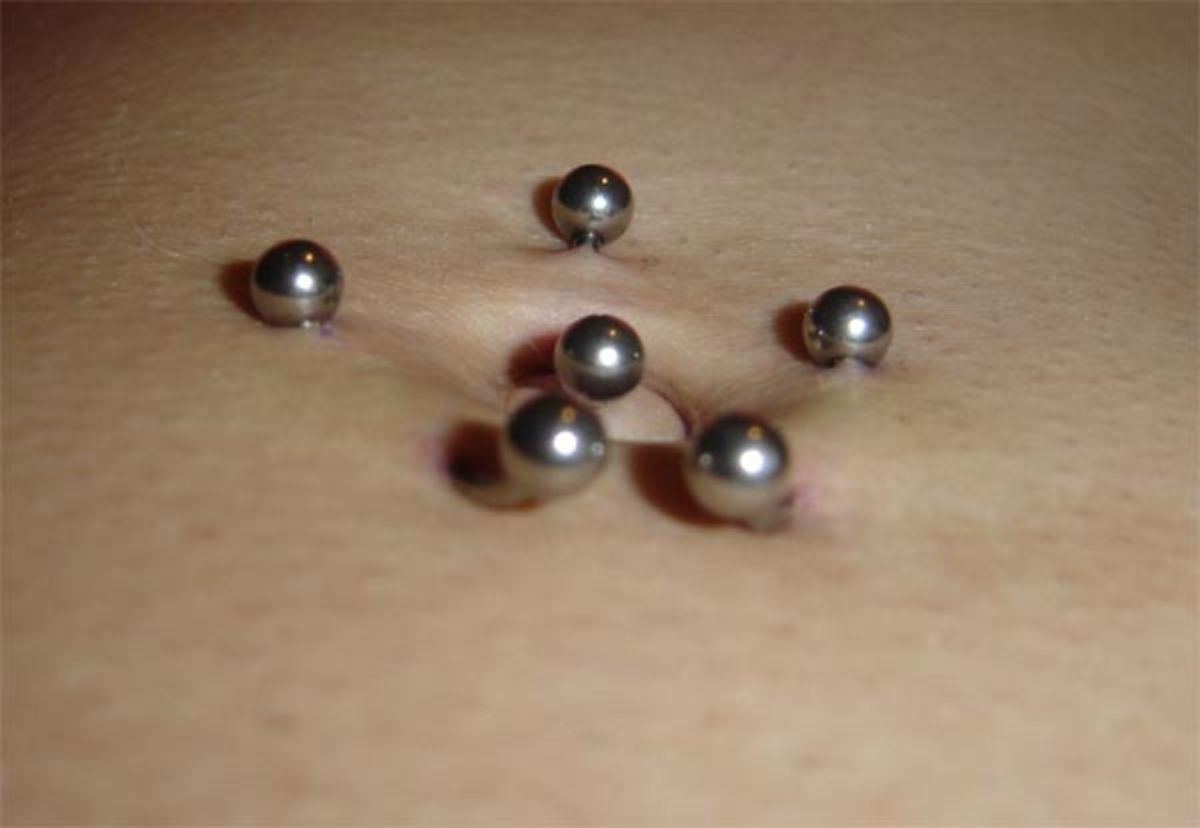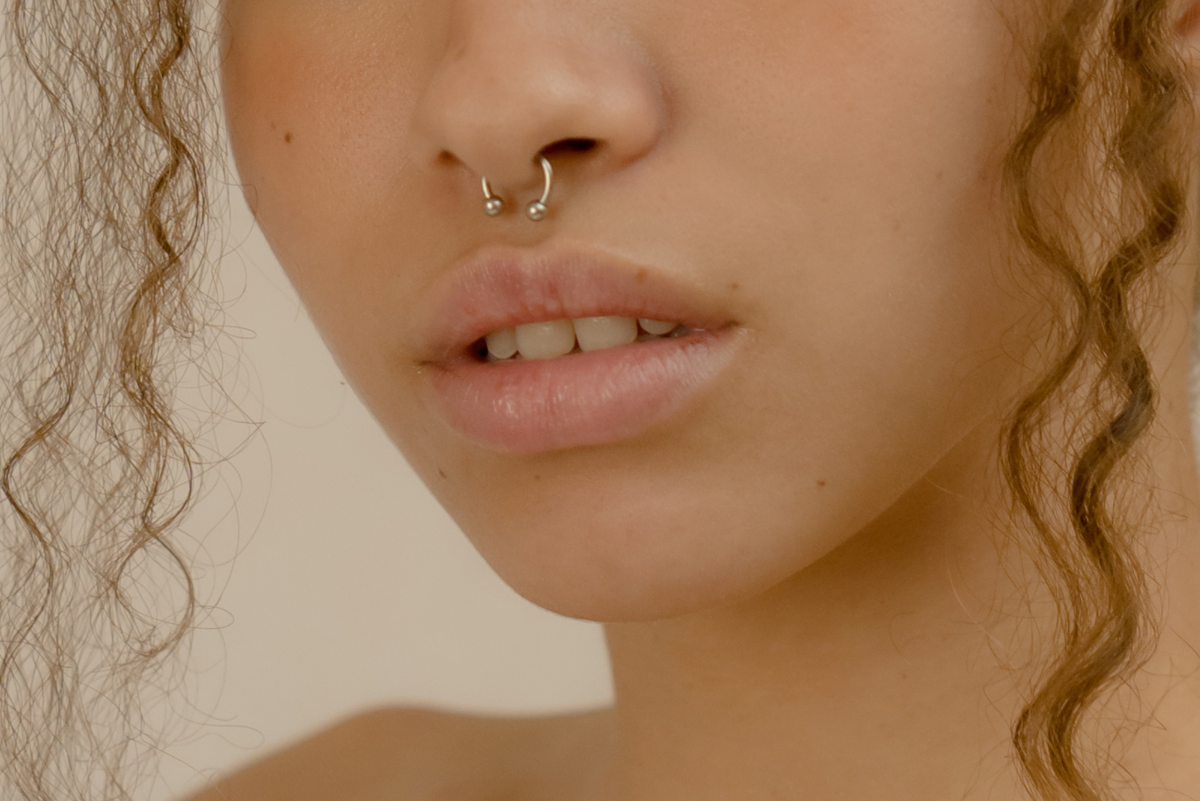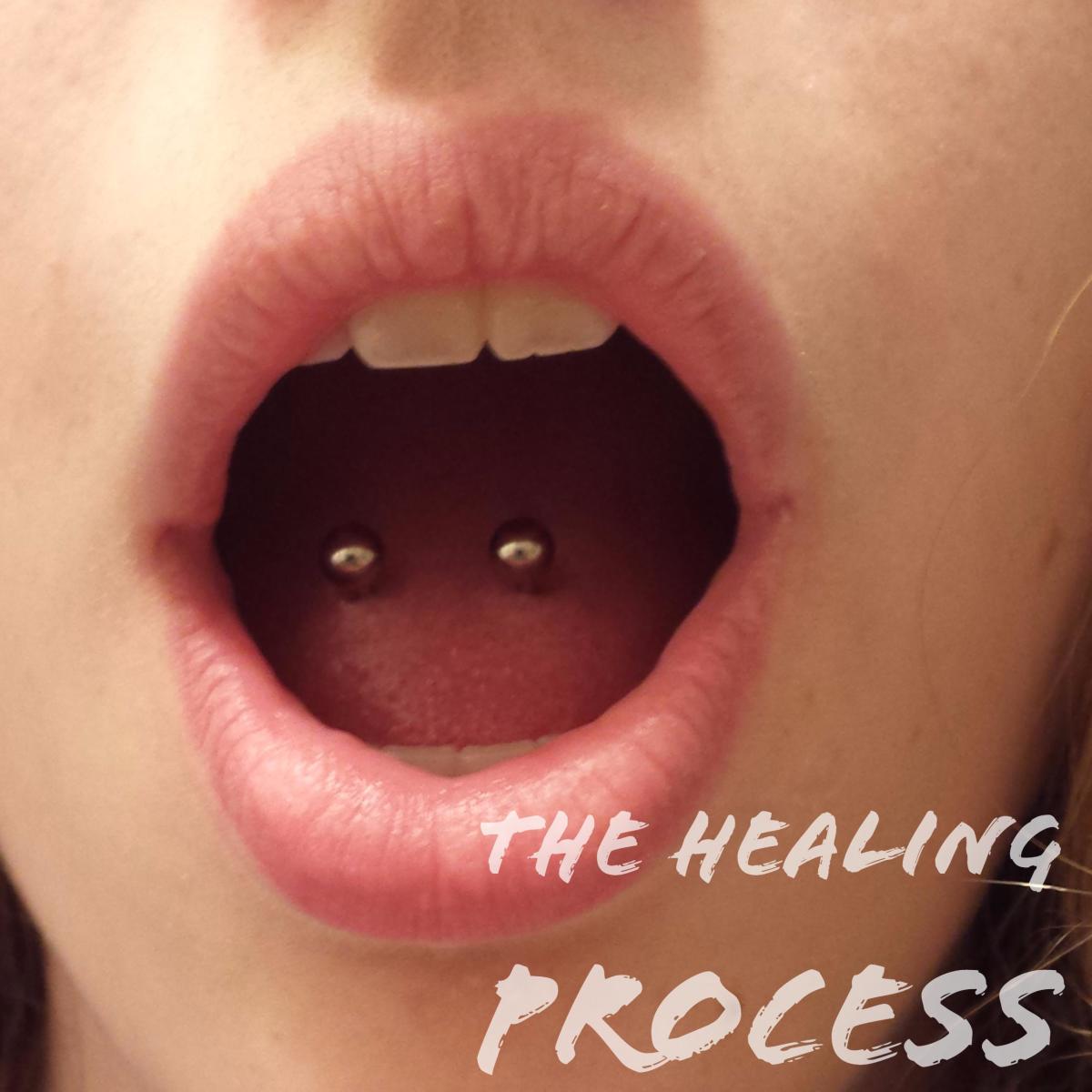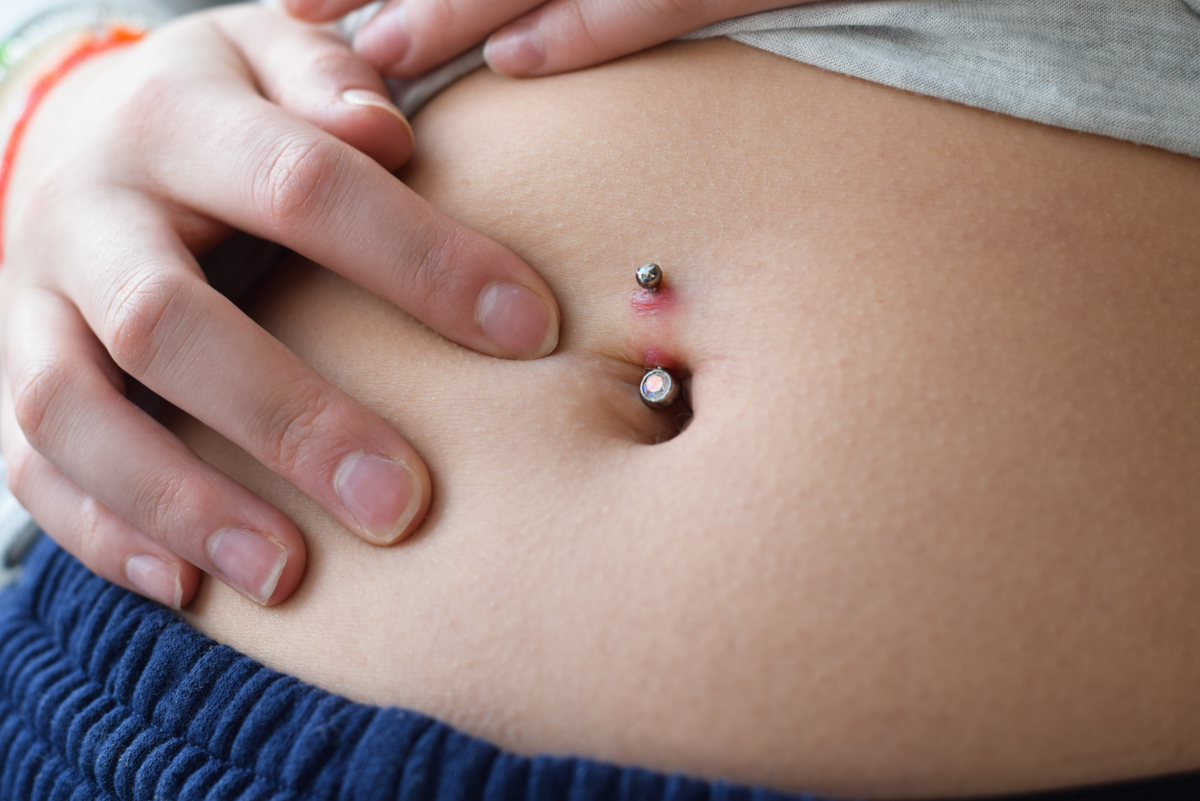Various Forms Of Body Piercing
Why People Pierce Their Body
If you were to go back to ancient times, the reasons for body piercings generally fell along the lines of displaying their status as royalty, or as a part of their cultural traditions.
Today, the practice continues in many areas of the world as tradition, and also in the western world as a means of self expression. Whether to stand out from the crowd, or as a means of beautifying certain parts of the body, it is a statement that has been growing in popularity. The extremes to which this practice has been growing is alarming to some, and addicting to others.
Pierced ears have been a popular and accepted display of body piercing, where most others are still controversial and frowned upon in many settings, such as schools, and places of employment.
Ear Piercings
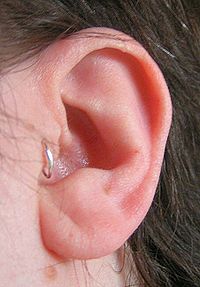
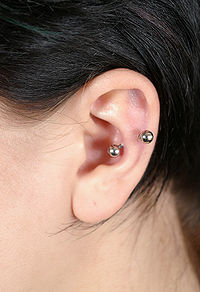
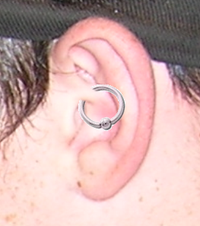
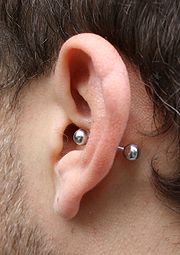
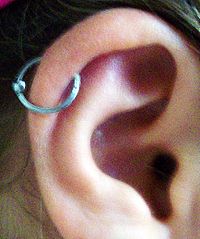
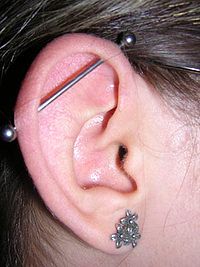
Ear Piercing Variations
Getting your ears pierced used to convey the idea that you were to have your earlobes pierced and plan on wearing pretty little stud, or dangling earrings. Today, the phrase can imply quite a variety of available piercings.
Tragus - The perforations is immediately in front of the ear canal. Typical jewelry is a small diameter captive bead ring or small gauge post style piercing jewelry.
Snug- A piercing passing through the anti-heli of the ear. Healing with this type of piercing can take up to 6 months. It's reported that the piercing itself does not hurt, but the inserting of the jewelry can range from uncomfortable to painful.
Daith - Involves the outer rim of the ear cartilage closest to the head. This can be an awkward area to pierce, and is usually done with a straight, hollow needle.
Inner Conch- piercing is located in the center ear cartilage, adjacent to the ear canal. After sufficient stretching, an open earlet will be worn.
Helix - a perforations of the helix or upper ear cartilage. A captive bead ring or stud is usually worn here. Sometimes, many piercings in a row will be performed.
Industrial - sometimes called scaffold piercing, this is when any two pierced holes are connected by a single piece of jewelry. It is typically two piercings of the upper ear cartilage. Two or more of these piercings on the same ear are called a cage.
The healing time for these ear piercings can range anywhere from three to 12 months.
Listen To, and Follow Directions Given For Care!
A qualified body piercing expert will give detailed instructions for the cleaning and care of your new piercing . . . follow these directions diligently.
If an infection does set in, and it lingers, it can eat away at the ear cartilage. The body can not replace cartilage, and once the infection clears up, parts of the ear can actually collapse without that necessary support. So . . .
take your experts advise seriously so you can enjoy your piercings for many years!
One More Consideration - Migration . . .
Some areas of the body are more accepting of piercing than others, and this is something you want to consider, and to talk to your piercer about.
Some piercings may migrate (move) from thier original peirced position. Some migration may be minimal with barely being noticed; or actually migrate entirely out of the skin - a way that our body rejects foreign objects.
Stretching
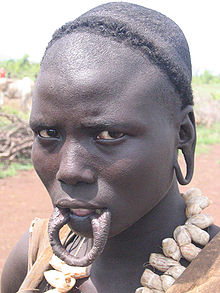

Stretched Piercing
Stretching is an increasingly expanded hole in the skin for the purpose of wearing body jewelry. Stretching is done in small increments so that healing can take place, and so there will be minimal scarring.
Ear piercings are the most commonly stretched areas, but nasal, tongue and lip stretching are also popular.
Most stretched areas when done properly will heal and depending on the amount of stretching, will even return to their original size, 0g is typically the point where you will not see a return to normal size. The time to stretch to the desired sized hole, and the size of the hole depends on the individuals tissue and other variables such as how long the piercing is allowed to heal at a particular size.
The jewelry used for these stretched piercings are called plugs, or flesh tunnels.
Many tribal women (i.e. Mursi and Thai hill tribes), still practice stretched lip and ear lobes.
Various Facial Piercings

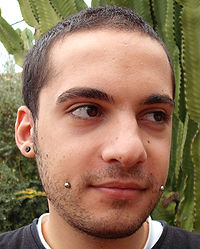
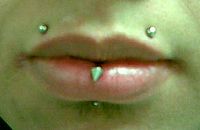
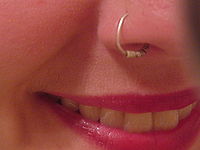

The Body Art Book
Facial Piercings
- Eyebrow - Relatively common, eyebrows can be seen pierced anywhere along the brow. These typically take up to a year to heal completely, and once healed, they can be changed without any discomfort. This is one of the safest piercings as they are not easily irritated. The piercing will close up within 24-48 hrs after removing jewelry, even after complete healing.
- Cheek- Usually done symmetrical on either side of the face, cheek piercing penetrates into the mouth area. Those who have this type of piercing done like the appearance of dimples that is provides. Due to an odor that full cheek piercing causes because of secretion of lymph fluid, some choose to go with Microdermals which are done with only one hole created, and the back of the jewelry sitting just below the skin.
- Lip- There are a variety of ways the lips are pierced with a variety of locations. The piercing usually heals within 3-10 weeks, with some scarring possible. The typical jewelry are either a captive bead ring, or labret stud.
- Nose - Long held traditions involve nose piercing, with India and Nepal in the forefront. Women in these areas believe that it will help with childbirth, and also used as a sign of social standing. The most popular jewelry is the hoop and the stud.
Body Piercings
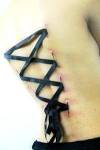
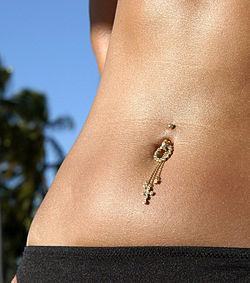
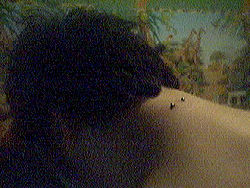
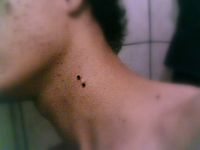
Body Piercings
- Corset - piercings that are a series of surface piercings done to look like lacing on the back of a corset. Two symmetrical rows running the length of the back, these are usually intended to be temporary due to the difficulties with healing. These surface piercings are rarely sported for more than a week, and often used for photo shoots. Ribbon and other materials are looped back and forth between the studs in order to create the look of a corset.
- Navel- A popular piercing done to the belly button area. Mostly popular with, but not exclusive to women. If instructions are followed, the healing time is usually less than six months with no problems. Ear piercings have more problems with rejection than does the navel.
- Nape and Neck- A type of surface piercing, these have a high rate of migration and rejection. The problem is that they are place in an area with a lot of movement and with a lot of possible irritation. Surface bars and barbells with bars made from a flexible material are commonly used. The neck piercing can heal in as little as five weeks, and the nape can take up to a year.
There are numerous more areas on the body that are popular for piercing such as the hip, genital areas, nipples, wrists, and hand webs.
Practicing Body Piercing
The practice of body piercing has been around for centuries, and most likely will continue long into the future. The controversy will continue as well, with some proudly following tradition and others following their free spirits; some will never understand and some won't care to try. I personally do not have any piercings besides my ears, but they are still that, piercings. I'm not sure that I would ever care to go beyond the ears, but, I have no problem with those that do.
It's an interesting world.
A Body Art Manual
- Body Piercing Basics
Body piercings are and have been expressions of religion, culture, lifestyle and personality for decades. In western culture particularly, piercings are so common that its acceptable to pierce infants'... - Body Piercing Care and Aftercare
The popularity of body piercing requires that those thinking about it to think about the things that are common sense in order to protect themselves from the not uncommon infected piercings and piercing...



